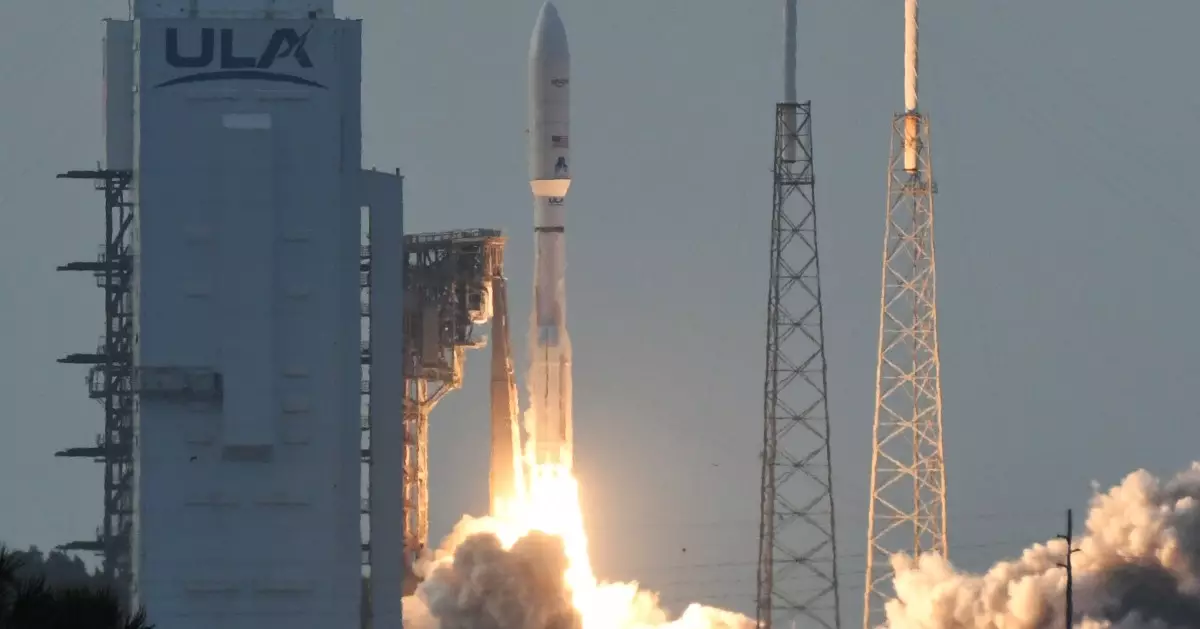The aerospace industry is witnessing an unprecedented surge in innovation, particularly in the realm of satellite technology. Amazon has officially joined the race with its ambitious Project Kuiper initiative, marking a significant milestone by successfully launching its first 27 satellites into low-Earth orbit. This endeavor represents just the beginning of a larger vision encompassing over 3,200 satellites designed to deliver broadband internet to underserved regions across the globe. The launch showcases not only technological advancement but also Amazon’s strategic intent to challenge SpaceX’s Starlink, which currently dominates the satellite internet sector.
The Launch: A Journey Begins
The inaugural mission of Project Kuiper took flight from Cape Canaveral Space Force Station aboard a United Launch Alliance (ULA) Atlas V rocket. Despite initial weather-related delays that postponed the launch date from April 9 to April 28, the operation was executed with precision as the satellites ascended to an altitude of approximately 280 miles (450 kilometers) above the Earth. This deployment is a testament to the hard work and dedicated efforts of the teams involved. Amazon CEO Andy Jassy expressed his pride in the project’s achievements, highlighting the collaborative spirit that has driven the initiative forward. The successful activation and communication of these satellites with ground systems signal the beginning of a new era in connectivity.
The Competitive Landscape
While the excitement around Project Kuiper is palpable, it is crucial to recognize the competitive landscape Amazon is entering. SpaceX’s Starlink has already established a robust presence in this market, with over 7,200 satellites currently operational and plans to expand their fleet infinitely. In contrast, the Federal Communications Commission mandates that Amazon deploy at least 1,618 satellites by mid-2026, a substantial goal that reflects the urgency of the market. These timelines underline not only the competitive pressure on Amazon but also the potential for a rapidly evolving satellite internet service, where speed, reliability, and coverage will be paramount.
Technological Innovation and Future Potential
The implications of Project Kuiper extend far beyond mere competition with Starlink. The technology underpinning the satellites aims to provide “high-speed, low-latency” internet service to a diverse set of customers, particularly in areas where traditional infrastructure is lacking or ineffective. This potential for enhanced connectivity can transform educational, healthcare, and business landscapes, particularly in remote or rural regions. With the world increasingly relying on digital connectivity, Project Kuiper could become a lifeline for many, enabling access to essential services and opportunities that were previously unreachable.
Looking Ahead: The Challenges of Deployment
While optimism surrounds the launch, it is essential to consider the challenges ahead. The satellite internet market is becoming increasingly saturated, with not only SpaceX but also other contenders like Eutelsat and the Chinese company Spacesail aiming to carve out their niche. The need for regulatory compliance, logistical coordination for numerous future launches, and technologies that can adeptly handle ever-increasing user demands are hurdles that Amazon must surmount to see Project Kuiper achieve its potential. Moreover, as low-Earth orbit becomes a congested area populated by thousands of satellites, ensuring safety and sustainability in space operations will be critical.
A New Frontier in Connectivity
Project Kuiper symbolizes a larger trend: the democratization of internet access. As global connectivity becomes a driving force in economic development and social equity, Amazon’s foray into satellite internet could have meaningful implications on a worldwide scale. The company’s ability to leverage its extensive experience in cloud computing, e-commerce, and logistics will be instrumental in shaping the infrastructure required for this vast network. Ultimately, while the stakes are high and competition fierce, the potential for transformative change through Project Kuiper remains a compelling narrative in the technological landscape.

